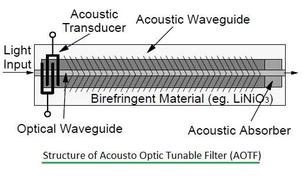Fiber Fuse: Function and Basics Explained
Advertisement
This page explains the basics of a fiber fuse and its function within a fiber optic network. We’re all familiar with fuses used in electrical devices, right?
A fuse is a safety device that interrupts the flow of current when an electrical circuit is overloaded. A fiber fuse performs a similar function, but specifically in optical fiber networks.
When an optical fiber network is subjected to very high optical intensity (typically greater than 2 MW/cm), the fiber cable can be shocked and damaged. This damage can cause the fiber to vaporize. The resulting defect becomes reflective, causing the signal to propagate back to the transmitter.

Figure: Fiber Fuse test set up
The figure above illustrates a typical setup used for fiber fuse testing.
In undersea fiber optic networks, high power levels are commonly used. In these applications, a fiber fuse serves as a crucial protection device. It’s placed at the transmit end and is designed to break the circuit, preventing further damage in the high-load scenarios mentioned above. This protects the sensitive and expensive equipment connected to the fiber.
Advertisement
 RF
RF



